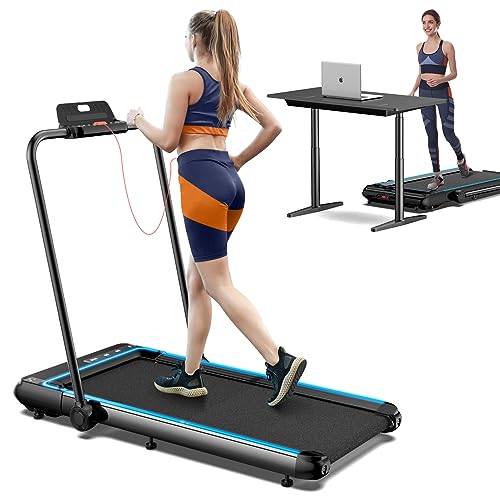Wpis na blogu utworzony przez Milton Erskine
Understanding Treadmills: Types, Benefits, and Considerations
Treadmills have actually ended up being an integral part of fitness culture, offering a hassle-free solution for people seeking to enhance their cardiovascular physical fitness without the need for outdoor spaces or weather factors to consider. With an array of functions and models readily available, possible buyers must be educated to make the very best decision. This article aims to supply a thorough summary of treadmills, consisting of the various types, advantages, and elements to consider when acquiring one.

The Different Types of Treadmills
1. Manual Treadmills
Manual treadmills are powered by the user instead of an electric motor. They need no electrical energy and normally feature a simple design with less moving parts.
Advantages of Manual Treadmills:
- Cost-effective
- Portable and lightweight
- No dependence on electrical energy
Downsides:
- Limited functions
- Typically do not have incline choices
2. Motorized Treadmills
Motorized treadmills are the most typical type, powered by an electric motor. They usually offer different functions such as programmable workout regimens, adjustable inclines, and greater weight capabilities.
Advantages of Motorized Treadmills:
- Smooth operation and consistent traction
- Flexible with innovative features for different exercises
- Options for incline and decline settings
Drawbacks:
- Higher cost compared to manual treadmills
- Need electricity and might increase electric costs
3. Folding Treadmills
Folding treadmills are designed for easy storage, making them perfect for those with restricted area.
Benefits of Folding Treadmills:
- Space-saving style
- Easy to transfer and save
- Suitable for home use where area is at a premium
Downsides:
- Typically may have a smaller running surface area
- Weight limit might be lower than non-folding models
4. Commercial Treadmills
These treadmills are developed for toughness and efficiency, normally found in health clubs and gym. They are created for high use rates and come with innovative functions.
Benefits of Commercial Treadmills:
- Extremely durable and frequently supported by guarantees
- Complete variety of functions, including advanced training programs
- Appropriate for heavy-duty workouts
Disadvantages:
- Higher cost point
- Might be too big or heavy for home use
| Type of Treadmill | Source of power | Typical Features | Ideal For |
|---|---|---|---|
| Manual Treadmill | None | Fundamental exercise metrics | Minimalist users |
| Motorized Treadmill | Electric | Programmable workouts, slope alternatives | General physical fitness enthusiasts |
| Folding Treadmill | Electric | Space-saving style | Home users with limited space |
| Industrial Treadmill | Electric | Advanced training programs | Gym facilities |
Benefits of Using a Treadmill
Treadmills provide numerous benefits for individuals aiming to enhance their physical fitness levels or maintain an athletic routine.
1. Convenience
Owning a treadmill enables users to work out at their own schedule, eliminating reliance on weather. It offers flexibility, as workouts can take place day or night.
2. Adjustable Workouts
Numerous modern-day treadmills feature personalized programs to accommodate newbies and skilled professional athletes. Users can adjust speed, incline, and exercise duration to take full advantage of the efficiency of their sessions.
3. Tracking Progress
The majority of treadmills come geared up with digital displays that record vital statistics such as range, speed, calories burned, and heart rate. Monitoring this data helps users track their physical fitness development over time.
4. Lowered Impact
Treadmills typically provide a cushioned surface area that can decrease joint effect compared to running on difficult outdoor surfaces, making them an ideal choice for people with joint concerns or those recuperating from injuries.
5. Range of Workouts
Users can participate in various workouts on a treadmill, from walking and jogging to interval training and speed work. Some machines even provide built-in courses that mimic outside surfaces.
Factors to consider When Buying a Treadmill
When buying a treadmill, individuals must consider numerous aspects to guarantee they make an informed decision.
1. Space Requirements
- Step Available Space: Before selecting a model, measure where the treadmill will be placed to ensure it fits comfortably.
- Consider Folding Options: If space is an issue, consider buying a folding treadmill for convenient storage.
2. User Weight and Height
- Check the weight capability of the treadmill to accommodate its designated users.
- Ensure that the belt length is appropriate for users' strides, particularly for taller people.
3. Features and Technology
- Assess whether advanced features like heart rate monitors, Bluetooth connection, and integrated training programs are essential for the designated user.
- Investigate easy to use user interfaces and item reviews on display quality.
4. Warranty and Customer Support
- Evaluation service warranty choices to comprehend what is covered and for how long. Some designs may use prolonged warranties or warranties for parts.
- Evaluate the brand's track record for customer support in case of breakdowns or concerns.
5. Cost Range
- Consider your budget plan but bear in mind that cheaper designs might do not have functions, sturdiness, or warranty support.
- Explore financing options if investing in a higher-end design.
Frequently asked questions About Treadmills
1. What is the average life-span of a treadmill?
Typically, a high-quality treadmill can last between 7 to 12 years, depending upon usage, upkeep, and construct quality.
2. What is the best treadmill brand?
Popular brand names include NordicTrack, Sole Fitness, Precor, and LifeSpan, each known for their quality and client complete satisfaction.
3. Can I use a treadmill for walking?
Yes, treadmills are best for walking, running, or running, making them versatile for users of all fitness levels.
4. How often should I service my treadmill?
Regular upkeep is normally recommended every six months to ensure optimal efficiency and durability.
5. Is it all right to work on a treadmill every day?
While operating on a Treadmill Uk Sale daily is acceptable for some, it's a good idea to include day of rest or alternate exercises to prevent potential overuse injuries.
In conclusion, treadmills stay a popular choice for physical fitness enthusiasts trying to find versatility and customizability in their exercise regimens. By understanding the different types offered, their advantages, and essential elements to think about during purchase, users can make an educated choice that aligns with their fitness goals and lifestyles.
